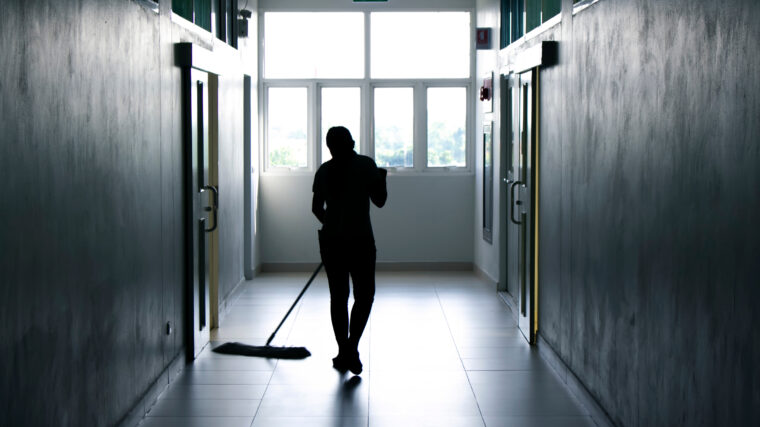The most immediate and worrying supply chain issue as a result of the war in Ukraine is around food supply.
Coupled with a lack of rainfall in other major grain producing areas of the world such as the American Midwest and India, the looming problems caused by Ukraine’s inability to trade normally and safely through its Black Sea ports will hit countries across the world.
The sheer logistical complexity of the world’s trading system is normally hidden from us, or beneath our notice as it smoothly does its thing in the distant background. With Russia’s invasion now apparently aiming at a “southern corridor” of land, including those trading ports, and with different train track gauges across Europe (including north from Ukraine to Baltic ports) making movement of goods by freight a fraught endeavour even from the safer parts of Ukraine, small parts of that complex logistical jigsaw swim into view.
Last year’s “stuck Suez ship” is another of those details: six days to sort that problem, and an estimated $54bn lost to the world economy.
We’re used to the idea of an international student body coming to our universities each year but few of us have thought through the international supply network that brings bricks, steel reinforcement or timber to play their vital roles too.
A hidden concern
For most of us at British universities, we see parts of the economic challenge facing us but we don’t necessarily connect all these details. As individuals we see rising inflation, at a 40-year high, including in food prices. We see petrol and home energy bills rocket. Our universities are facing million-pound-plus rises to energy costs for a mid-sized university. And we would all certainly notice an international humanitarian crisis related to food supply unfold were that to happen.
As estates leaders, we see inflation in our materials supply chain too, and to a level that is really beginning to impact on our work.
The current challenges to the supply chain come from three factors that are now combining into something of a supply chain storm. Brexit, Covid and Ukraine create separate challenges, but combined as they have been during the last two years, they add up to a genuinely tough environment for those of us in HE estates, and in the companies we work with and rely on to keep our campuses at the leading edge of world education.
Sheer hard facts
Covid taught us like nothing before that we needed to collaborate to face down a crisis, and estates teams and their suppliers have worked together life never before over the pandemic period in ways that are shaping our project management relationships for good. But before we explore that, let’s think about some of the sheer hard facts that supply chain inflation presents to us, and I’m grateful for the work of our partners Sir Robert McAlpine for sharing their insights in this area.
Their tracking of materials costs obviously plays a key part in their ability to contract successfully for work at our universities. Sir Robert McAlpine’s Head of Material Procurement Chris Davison has shared with us the kinds of negative activity they are seeing in world markets. For instance, house building in the UK is now back towards pre-Covid levels, creating extra demand for bricks at a time when some suppliers are not yet at full production, with some facilities having been mothballed during the worst of the disruption.
The costs of the gas that fires the brick kilns has gone up, resulting in “energy surcharge’” of £250 per 1000 bricks. There is both the reduced supply from European factories, and haulage challenges to factor in. Lead times can be as much as 40 weeks, and unpredictable price rises in the area of 10 to 16 per cent between orders are now increasingly common.
Wood, steel, and containers
The story is similar across other main categories of key materials. Wildfires in the US and Canada, lockdowns in South America and high global demand leading to shortages have led to price rises of 40 per cent to 200 per cent in every category of timber supply, from MDF onwards. Ukraine is one of the major suppliers of oak and pine to the UK, a supply that is now badly disrupted. The sustainability credentials of Russian and Belarusian timber (“conflict timber”) have been taken away, and Russian-flagged ships can’t dock to unload anyway.
Lead times for steel more than doubled during 2021, to more than 30 weeks, while prices are at their highest for a decade. Ukraine is a key supplier of iron ore to the world market, but with routes broken, panic buying hit the market. Fixed price deals are no longer on offer from steel mills. Backup storage of plasterboard stock was heavily reduced at the height of Covid to meet the needs of NHS projects such as the Nightingale hospitals: there’s now a shortage. Cement – up 19 per cent in 2021. Higher demand for mineral wool insulation, in part driven by Grenfell, has led to lead times shifting from around 5 days under ‘normal trading’ to more than 100 days.
In addition, as Russell Day (Education Sector Head for Sir Robert McAlpine) explains,
There is also a global container shortage. Shipping from the Far East has quadrupled in price for a wide range of reasons, including lockdowns in Chinese ports, and shipping lines are asking for upfront payment. Congestion at UK ports means the country isn’t always viewed as a favourable trading destination. Diesel rates are up. There is a shortage of qualified UK HGV drivers, and big national projects such as the HS2 line have taken a huge proportion of those that are available.
The knock-on effects to our higher education estates projects of all this uncertainty is huge – both in terms of cost and planning. And to put a figure on the changes in energy costs, in February 2022 (shortly after the Russian invasion) prices of electricity on the wholesale electricity market reached £500 per MWh, no less than five times the price just 12 months earlier.
Campus impacts
What does this mean for the project managers at UK universities and the suppliers we use in HE estates construction? It means significant disruption to project business cases. It means that some key suppliers have become insolvent. But it also means an opportunity for greater collaboration and transparency about our projects and the chance to develop longer-term, more open and trusting relationships with our construction partners.
The team at Sheffield Hallam have developed the Hallam Alliance, a way to bring suppliers into key management decisions via project boards drawn from all stakeholders: their thinking has recently won them the AUDE Award for our Team of the Year. This kind of collaboration means that suppliers can be brought in early to help develop project specifications. It means that partners can share market intelligence to help them make informed decisions, and it creates a space for greater certainty, for instance by sharing early news on the potential project pipeline.
We can help our suppliers by standardising specifications, procuring materials earlier than we might be used to, and working out risks and mitigations together. This kind of relationship aims at the long-term and tries to build confidence on both sides of the relationship – confidence that supports both investment and innovation.
Covid has given us a chance to trial this kind of approach. Many estates directors at AUDE member universities have been grateful for the flexibility of approach shown by our contractors as we all struggled together to navigate national and local lockdowns, with all of the disruption that brought. During Covid we’ve seen collaboration between contractors and clients in a way we’ve seldom seen before – on timescales, costs and contracts.
Should we build yet?
With so much volatility in materials markets it is difficult to predict the near future for our major estates projects. Some universities will be considering delaying projects, hoping for a calmer and lower cost market to commission into from 2024 or 2025. Others will drastically re-scope as a way to avoid cancellations.
For all, we may feel like we are choosing between poor options. We’ll all be focusing on the driver of the project in the first place – what got us to the drawing board and are we maximising every possible gain for the capital spend? The kind of uncertainty – as we see the triple shocks of Brexit, Covid and Ukraine continue to play out – looks like shaping estates decision-making well into the future.













